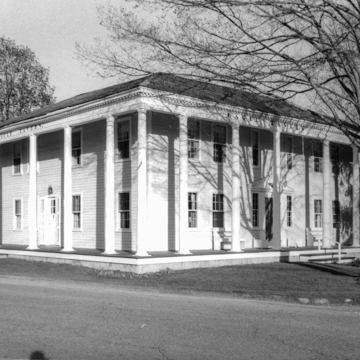You are here
House (Eagle Tavern)
Although long a private dwelling, the two-story, wood-frame former Eagle Tavern is the most stylish eighteenth-century tavern and inn extant in Vermont (the claims of many other inns actually dating from after 1800 notwithstanding). Originally a pre-Revolutionary tavern, reputedly a meeting place of the Green Mountain Boys, about 1790 the tavern was remodeled into its present enlarged form. It has a broad hipped roof that shelters a monumental portico on two sides supported by twelve irregularly spaced slender columns, each originally made from a single spruce log. Facing the green, the main entrance has a wide doorway framed by fluted pilasters, sidelights, and a broad pediment with dentil course, in keeping with other local vernacular Georgian designs. Despite much rearranging and twentieth-century “restoration,” the second-floor ballroom remains intact.
Writing Credits
If SAH Archipedia has been useful to you, please consider supporting it.
SAH Archipedia tells the story of the United States through its buildings, landscapes, and cities. This freely available resource empowers the public with authoritative knowledge that deepens their understanding and appreciation of the built environment. But the Society of Architectural Historians, which created SAH Archipedia with University of Virginia Press, needs your support to maintain the high-caliber research, writing, photography, cartography, editing, design, and programming that make SAH Archipedia a trusted online resource available to all who value the history of place, heritage tourism, and learning.















